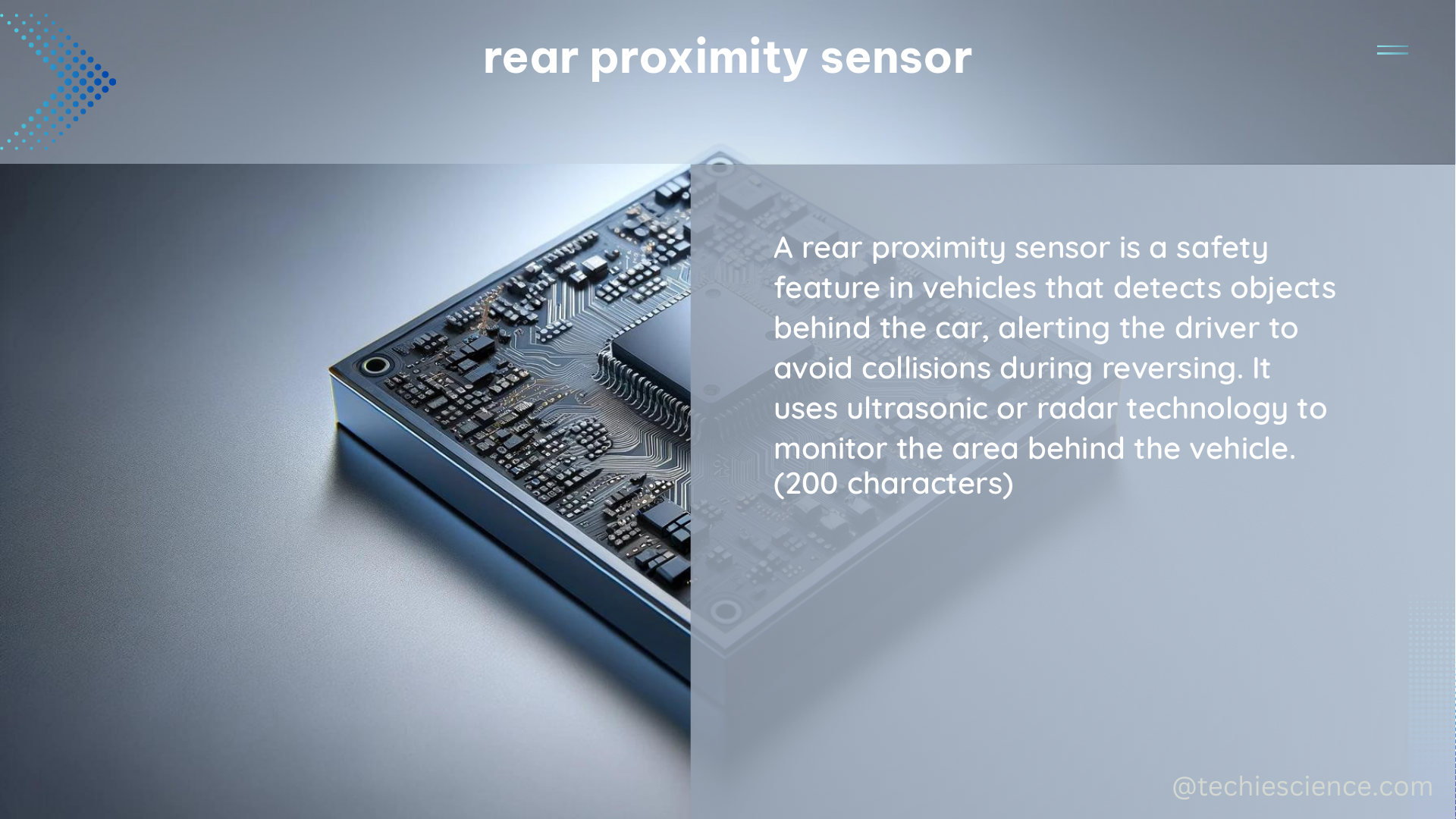Rear proximity sensors, also known as parking sensors, are a crucial component in modern vehicles, providing drivers with valuable assistance during parking maneuvers. These sensors utilize ultrasonic technology to detect obstacles behind the vehicle, allowing for safer and more efficient parking experiences. In this comprehensive guide, we will delve into the technical details, functionality, and DIY applications of rear proximity sensors, empowering you to understand and potentially even build your own system.
Understanding the Rear Proximity Sensor System
A typical rear proximity sensor system consists of a central module, four individual sensors, and an LED display. The sensors are connected to the central module via two wires, which are then processed into a “data” wire that connects to the LED display. The data waveform output by the module consists of 24 data bits, including two large pulses for sync/start and 21 pulses of data that change based on the distance of the sensors to an object.
Sensor Specifications
Rear proximity sensors are designed to operate within a specific range and frequency. According to industry standards, these sensors typically have a detection range of 0.1 to 2.5 meters, with an angular coverage of approximately 90 degrees. The sensors operate at a frequency of around 40 kHz, which is well within the human hearing range but above the audible threshold for most individuals.
The sensors themselves are typically made of durable materials, such as plastic or rubber, to withstand harsh environmental conditions. This ensures reliable performance and longevity in the demanding automotive environment.
Sensor Functionality and Testing
The functionality of a rear proximity sensor can be tested by measuring the resistance between the first two pins of the sensor. Using a multimeter, a healthy sensor should have a resistance level of around 9.9 on a 20k scale. If the sensor is faulty, the multimeter may indicate an open circuit or a different resistance level.
DIY Approach to Rear Proximity Sensors

For those interested in a hands-on approach, there are several DIY projects available that involve hacking and decoding rear proximity sensor data. One such project, as detailed in a forum post, utilizes an Arduino microcontroller to interface with the sensor module and log the data from the pulse pattern to the serial port. By analyzing this data, the distance to an object can be determined based on the pulse pattern.
Hardware Requirements
To replicate this DIY project, you will need the following hardware components:
- Arduino board (e.g., Arduino Uno, Arduino Nano)
- Rear proximity sensor module
- Jumper wires
- Breadboard (optional)
Software Setup and Data Decoding
The software setup for this project involves programming the Arduino to interface with the rear proximity sensor module and log the data to the serial port. The key steps are as follows:
- Connect the sensor module to the Arduino using the appropriate pins.
- Write a program in Arduino IDE to read the data from the sensor module and log it to the serial port.
- Analyze the logged data to determine the distance to an object based on the pulse pattern.
By following this DIY approach, you can gain a deeper understanding of how rear proximity sensors work and potentially customize the system to suit your specific needs.
Advanced Considerations
For those interested in further exploring the technical aspects of rear proximity sensors, there are several advanced considerations to keep in mind:
- Sensor Calibration: Proper calibration of the sensors is crucial for accurate distance measurements. This may involve adjusting the sensor’s sensitivity, angular coverage, or other parameters.
- Sensor Fusion: Combining data from multiple sensors, such as rear proximity sensors and other vehicle sensors, can enhance the overall accuracy and reliability of the parking assistance system.
- Sensor Integration: Integrating the rear proximity sensor system with other vehicle systems, such as the infotainment system or autonomous driving features, can provide a more seamless and comprehensive user experience.
- Environmental Factors: Factors such as temperature, humidity, and interference from other electronic devices can affect the performance of rear proximity sensors. Addressing these environmental considerations is essential for reliable operation.
Conclusion
Rear proximity sensors are a vital component in modern vehicles, providing drivers with valuable assistance during parking maneuvers. By understanding the technical details, functionality, and DIY applications of these sensors, you can gain a deeper appreciation for their role in enhancing vehicle safety and convenience.
Whether you’re a DIY enthusiast looking to build your own rear proximity sensor system or a technology enthusiast interested in the advanced aspects of sensor integration, this comprehensive guide has provided you with the necessary information to explore the world of rear proximity sensors further.
Remember, as you delve into the world of rear proximity sensors, always prioritize safety and follow best practices to ensure the reliability and performance of your system.
References
- Trying to decode data from Chinese parking sensor, need help
- Reverse Engineering a Parking Sensor
- Ultrasonic Sensor-Based Parking Assistance System

The lambdageeks.com Core SME Team is a group of experienced subject matter experts from diverse scientific and technical fields including Physics, Chemistry, Technology,Electronics & Electrical Engineering, Automotive, Mechanical Engineering. Our team collaborates to create high-quality, well-researched articles on a wide range of science and technology topics for the lambdageeks.com website.
All Our Senior SME are having more than 7 Years of experience in the respective fields . They are either Working Industry Professionals or assocaited With different Universities. Refer Our Authors Page to get to know About our Core SMEs.